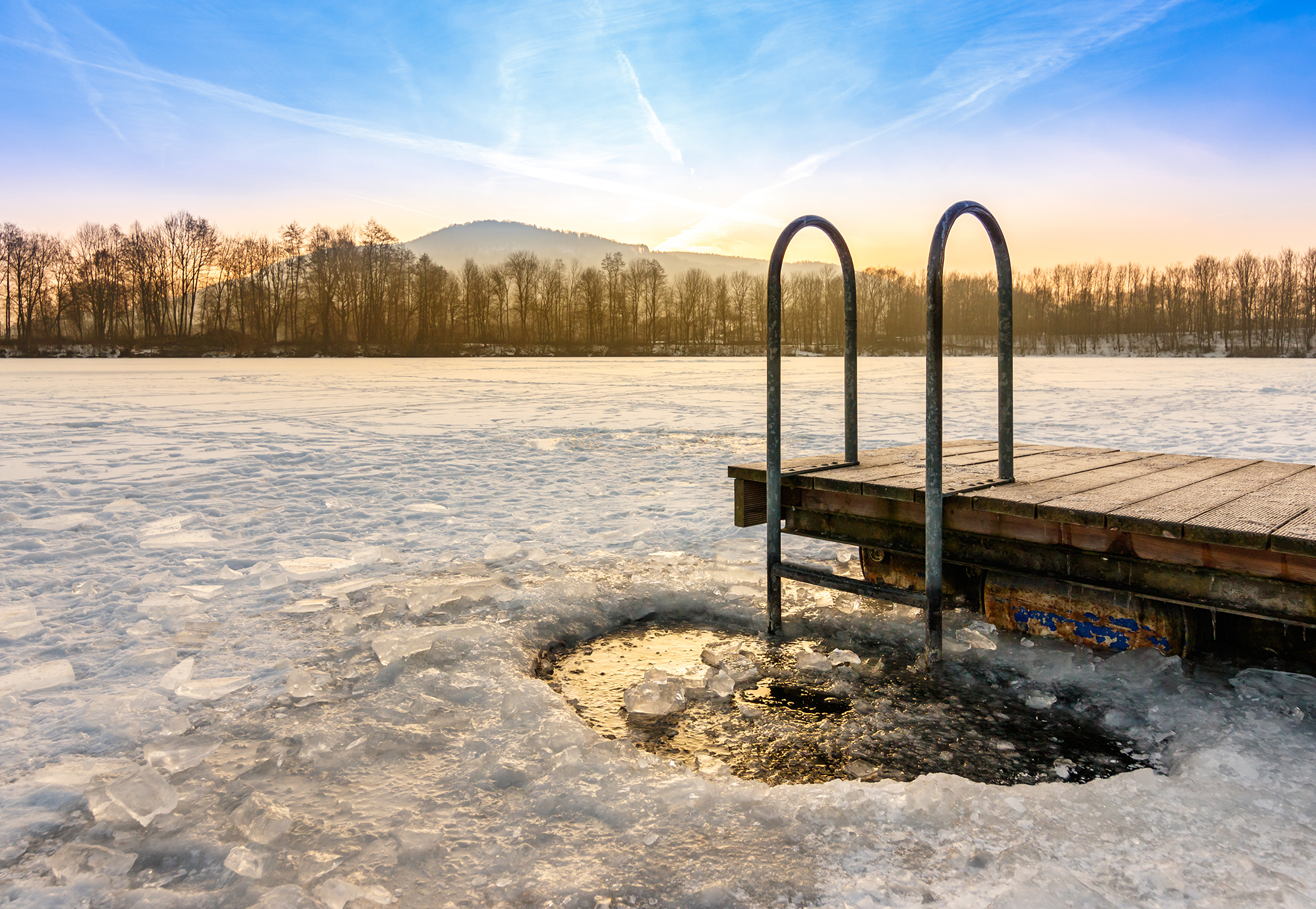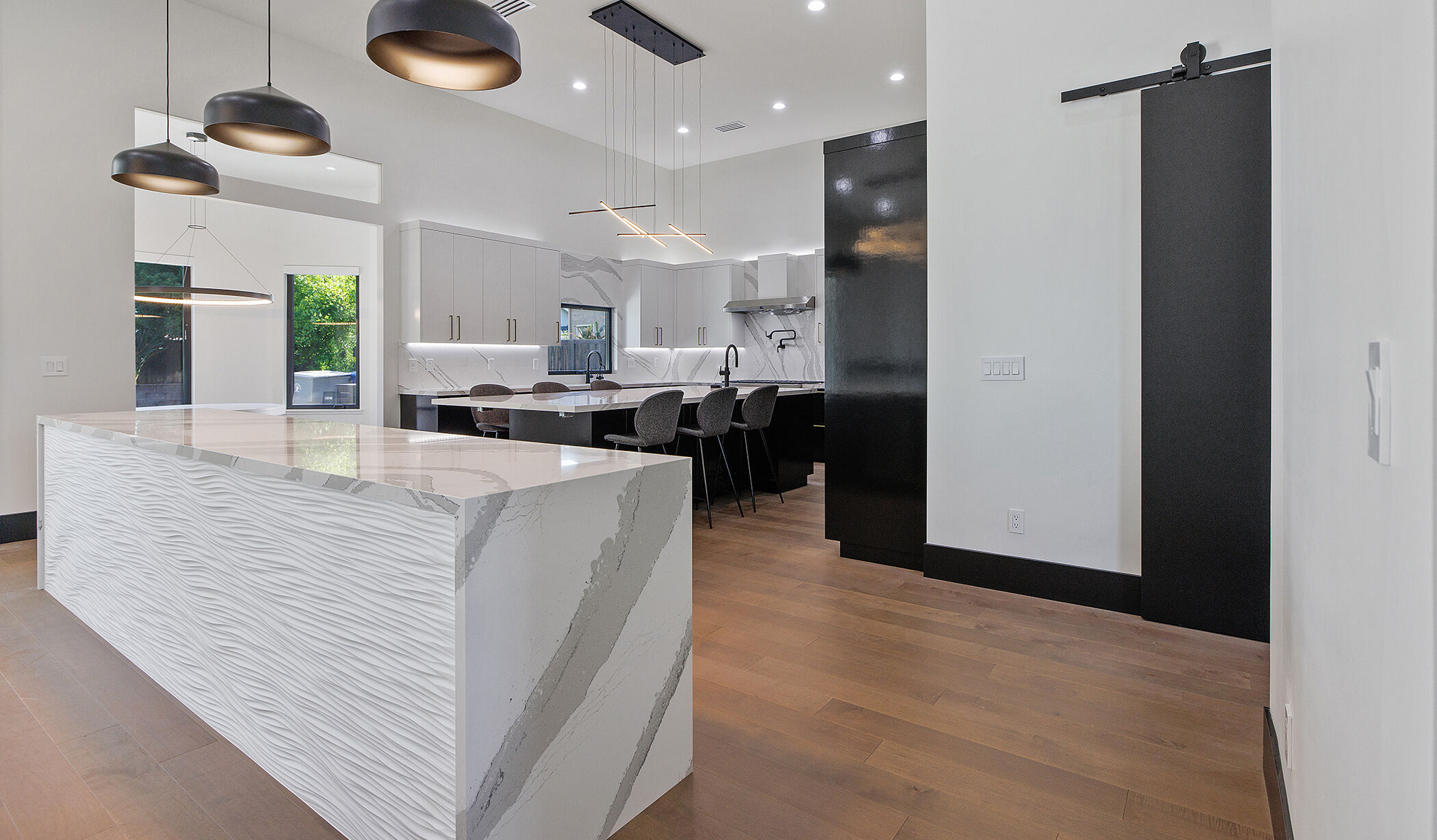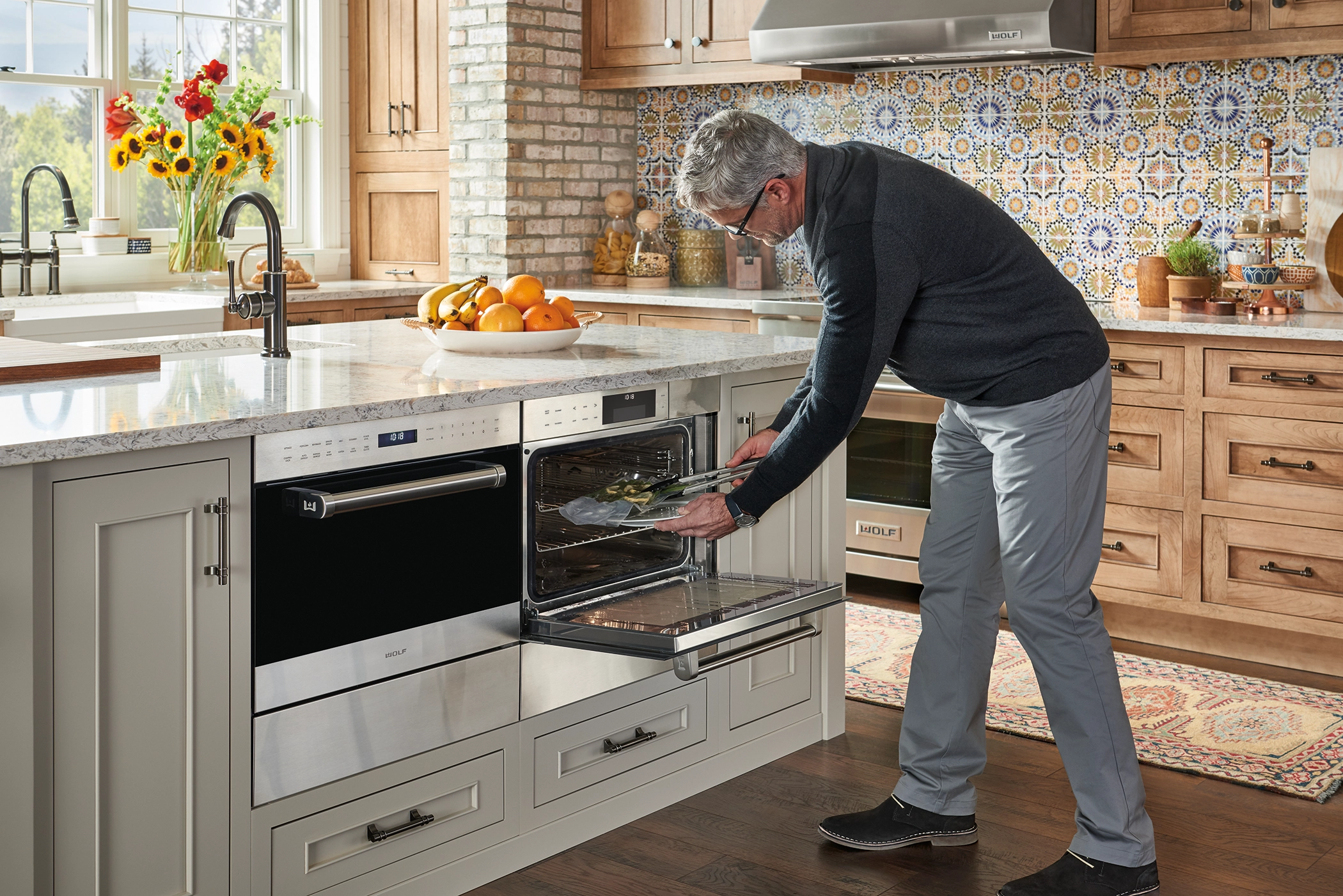Cold plunging has been all the rage lately, with practically every wellness blogger, athlete, and celebrity touting its benefits. It sounds simple: immerse yourself in icy cold water for a few minutes once a day to experience a myriad of mental and physical benefits. But is it really worth the hype? Read on to learn about the phenomenon of cold plunging, how to cold plunge, the benefits, risks, and more.
What is a cold plunge?

A cold plunge, also known as an ice bath or cold water immersion, refers to deliberate cold exposure in water. Plunges typically happen in water less than 60°F and can go as low as 38°F. They can take place in winter oceans, lakes, bathtubs, or special tubs designed to maintain temperature. The great part about cold plunging is that it is pretty accessible, whether you live near a body of water, have a pool, or can run your shower at a cold temperature. Think of a cold plunge as a therapeutic dip in ice water!
Benefits of Cold Plunging
Incorporating cold plunging into your wellness routine can have numerous health benefits, such as enhanced mood, reduced inflammation, improved stress management, and more.
Speed up muscle recovery and reduce inflammation

After an intense workout or training session, your body may feel sore, achy, and fatigued. By submerging yourself in cold water, your blood vessels constrict, slowing blood flow and relieving swelling and soreness. Stephanie Brownyard, Plumbing and Hardware Merchant at PIRCH, has seen significant benefits from incorporating cold plunging into her weekly wellness routine to help her muscles recover. On a physical level, “cold plunging has helped me to stay active and train more frequently as my body recovers from physical activity especially as I have aged,” Stephanie says. “I can now sometimes train 2 times a day including: running, dancing, Brazilian Jui Jitsu and yoga.”
Reduce stress and anxiety
By decreasing your core body temperature, a cold plunge can deliver a wide range of mental benefits, including reducing stress and anxiety. Cold exposure increases the production of a neurotransmitter called norepinephrine, which impacts focus, attention, vigilance, and mood. As a result, cold plunging consistently can produce a feeling of calm, happiness, and well-being, helping to combat mental health symptoms like stress, depression, and anxiety. Cold therapy can also increase mental resilience and discipline, as consistent exposure to cold temperatures helps the mind find comfort within the discomfort.

Ryan Bloom, Co-Founder and President of Urban Bonfire, is a huge proponent for cold plunging and its benefits, sharing his experiences with his community on LinkedIn. Ever since he attended a 2-day training event with motivational speaker Wim Hof in January of 2023, he has incorporated some form of cold exposure into his routine every day. Ryan has found that the act of cold plunging is a “simple daily test/commitment to working through a stressful situation by focusing on breathing, calming and mental focus.” He also explains that he finds it “symbolic of other tests and stresses we all experience in life and that in many cases, we have the innate ability to control a situation vs. a situation controlling us.”
Bolster the immune system

The immune system is a crucial part of staying healthy, and cold plunging can help protect you against common colds and viruses. How? The shock of the icy cold water can stimulate the white blood cells (also known as leukocytes) to circulate in your body more quickly, helping to fight off infections. Exposure to cold may also help your immune system produce other infection-fighting warriors, including t-cells and antibodies.
Improve circulation

For most people, being cold is uncomfortable. As a result, our bodies are put under strain and enter fight or flight mode, also known as the sympathetic arm of our nervous system. During fight or flight mode, blood flow to the muscles, brain, legs, and arms is increased. Some research even suggests that cold water immersion doesn’t just enhance circulation immediately post plunge but can lead to adaptations in the body that further enhance circulation over time.
Accelerate metabolism

Put simply, when our bodies are exposed to the cold, they expend more energy trying to stay warm. The result may be a small amount of calorie burn and an increased metabolic rate. While a short, one-time increase may not burn a significant number of calories, repeated bouts of cold exposure can increase the body’s production of brown fat. Unlike typical body fat, brown fat can regulate body temperature and burn calories.
How To Cold Plunge
Just like a workout routine, a cold plunge routine is going to be unique and personalized to your age, geographical location, and lifestyle. There is no one size fits all with cold therapy, which is great because you can mix and match strategies to incorporate it into your daily, weekly, or monthly routines.

For Ryan Bloom of Urban Bonfire, he starts with 10-15 minutes of breathwork to prime his body for the plunge. “I then slowly enter the cold plunge on the slowest possible exhale and focus entirely on the exhale,” he says. “I pretend to be breathing through a tiny straw and just relax into the breathing. I typically choose a song each day that ranges from 4-8 minutes and that establishes my time in the cold. After getting out, I do some large muscle group warm-up exercises (push-ups, squats, etc.) to warm up from the inside.”
If you’re a beginner, start small. There is no reason to immediately jump into a 10 minute cold plunge when you haven’t acclimated yourself to the practice yet. Stephanie Brownyard, Plumbing and Hardware Merchant at PIRCH, suggests to “Start slow. You can start by going in for 30 seconds 2-3 days a week. The next week try pushing yourself to 60 seconds for 2-3 days per week. Then, work yourself up to 3 minutes 2-3+ days a week.”
Where To Cold Plunge
You can cold plunge in nature, whether it’s a lake, ocean, or creek, at a fitness studio, spa, or in the comfort of your own home. For beginners, it might be best to take up this new practice at home in your bathroom or backyard. There are many options to implement cold plunging into your routine at home, ranging from outdoor to indoor options. If your preference is to take your plunging outdoors, you can opt for inflatable, wood, or stainless steel tubs.
For cold plunging indoors, Hydro Systems recently introduced a new cold plunge system, which can be added to practically any Hydro Systems bathtub. You can choose a tub that fits your style and add Cold Plunge, which reduces the water temperature down to 37°F. In addition, there are a host of additional options available that allow you to create the ultimate at-home wellness experience, like chromatherapy, enhanced jets, a masseuse system, and so much more.
You can also check your local gym, spa, or wellness center for cold plunge tub availability. And, depending on where you live, there might even be community cold plunge events that you can purchase tickets for. These events are a great opportunity to ease yourself into the practice and connect with others who cold plunge as a part of their regular routine.
Risks of Cold Plunging
With every wellness practice, there are also potential risks that must be discussed. Some contraindications to cold plunge therapy include a history of heart disease, Raynaud’s disease, high blood pressure, and pregnancy. In addition, while cold plunges can soothe your aches and pains, they aren’t the right choice if you’re dealing with an injury like a fracture, tendon or ligament tear, or broken bone. If you have known medical issues and are nervous about taking the plunge, please consult your health practitioner.
Are you a fan of this wellness trend? We definitely are! If you’re overwhelmed, there’s no need to alter your wellness routine immediately. Incorporating cold plunging into your day can be done slowly and with intention. The easiest way to participate in this trend is to incorporate cold into your daily shower. Simply turn your shower to cold for 1-2 minutes at the end of your shower, and notice how you feel afterwards. You may love it and become the newest cold therapy aficionado!
To learn more about how to incorporate cold plunge therapy into your next remodel, visit a PIRCH showroom near you, and speak to a sales consultant.




